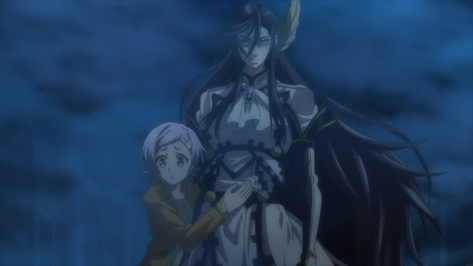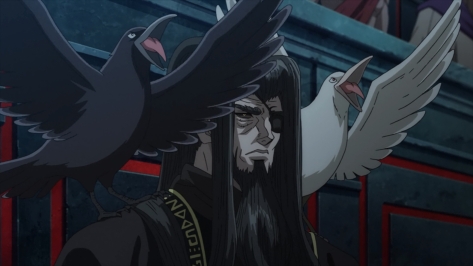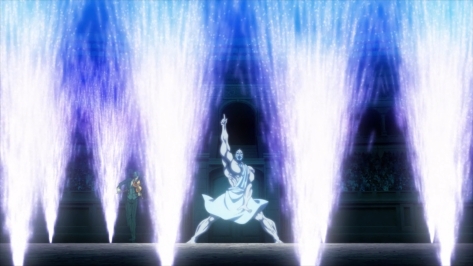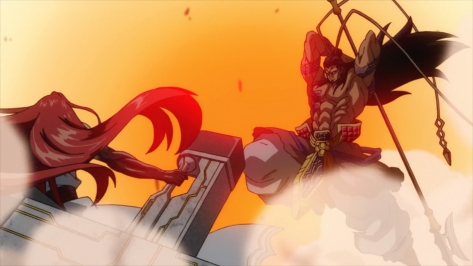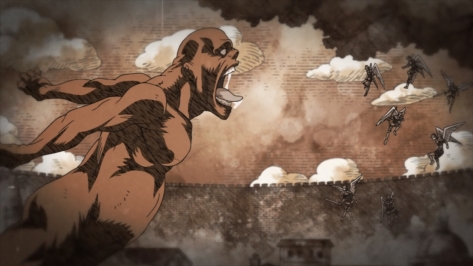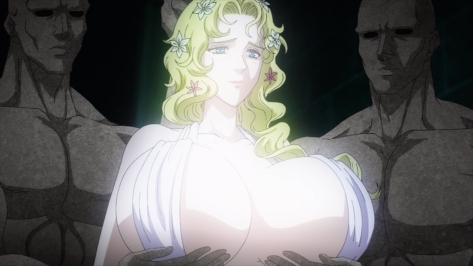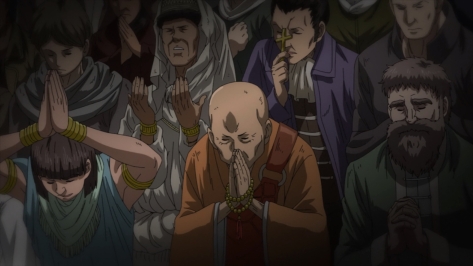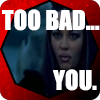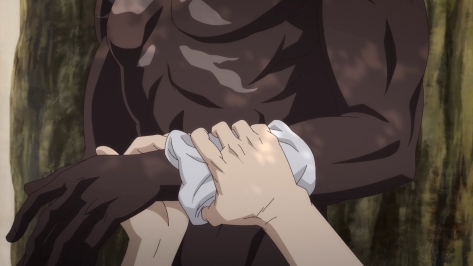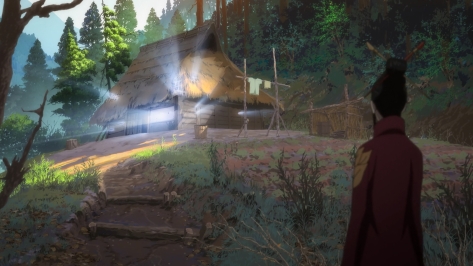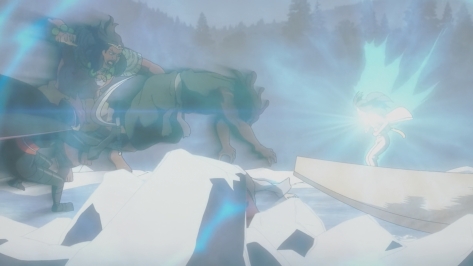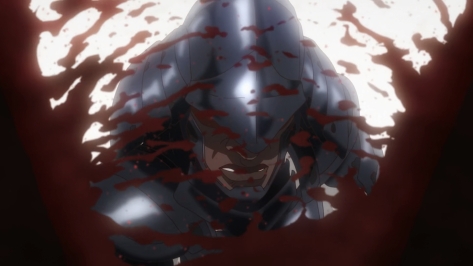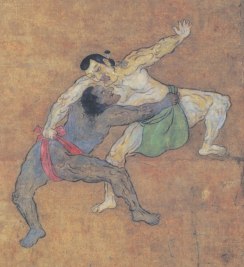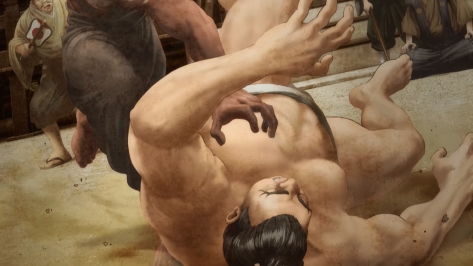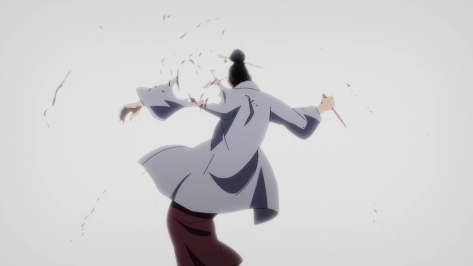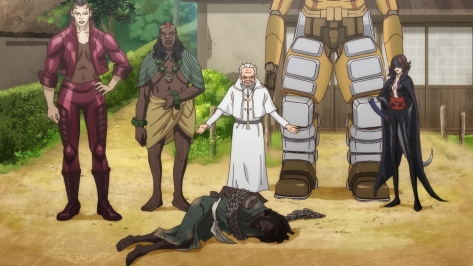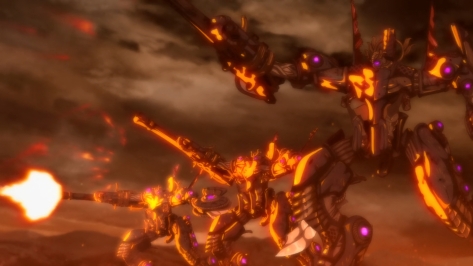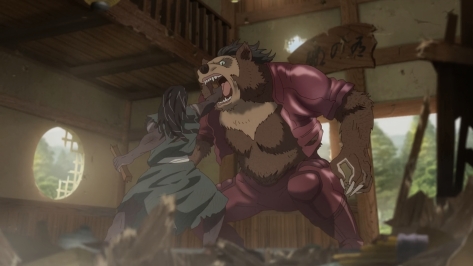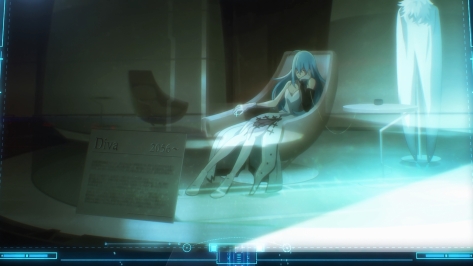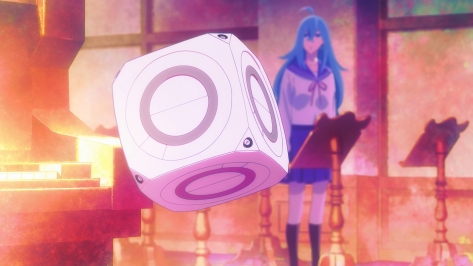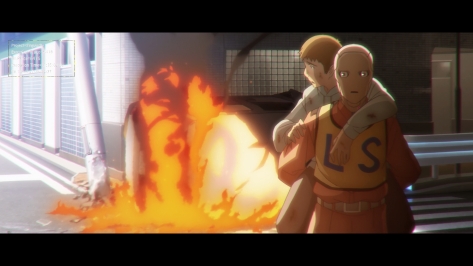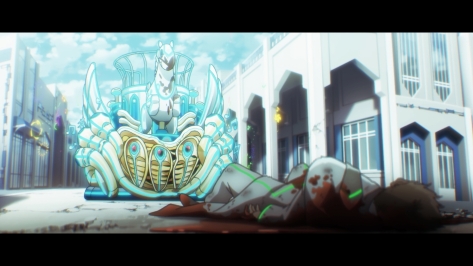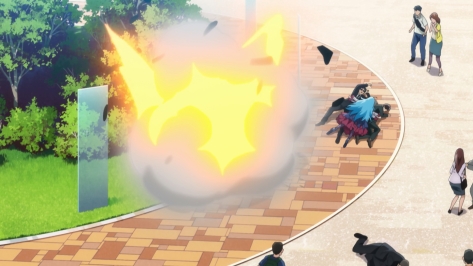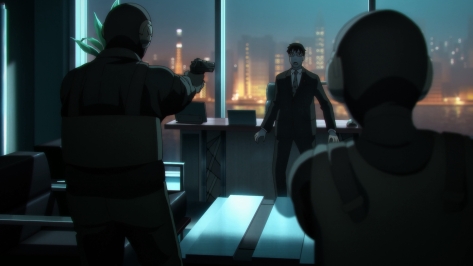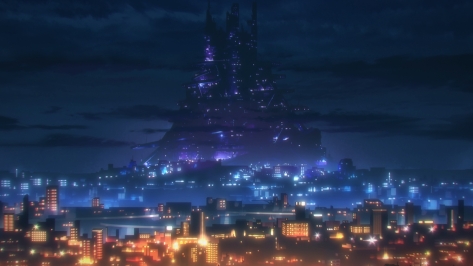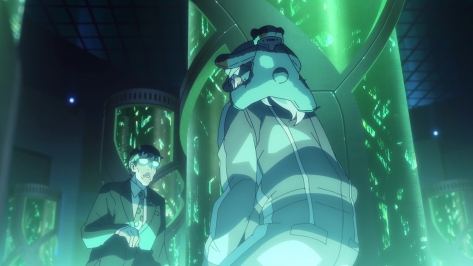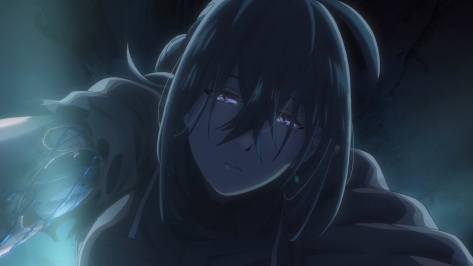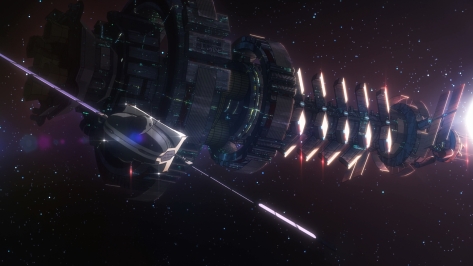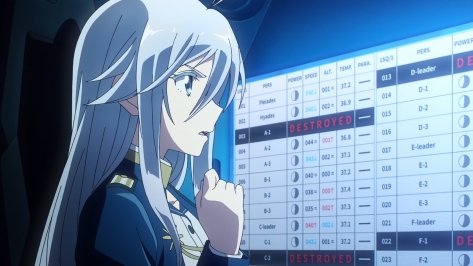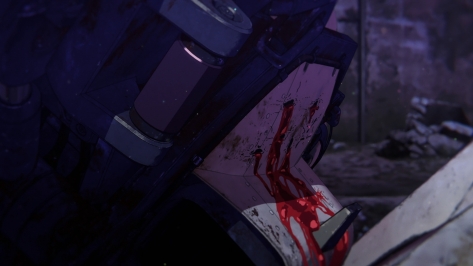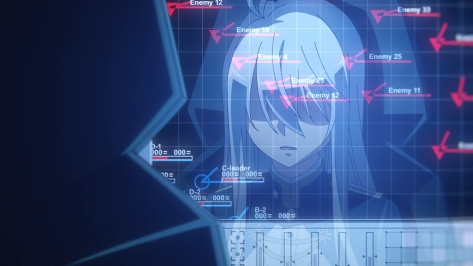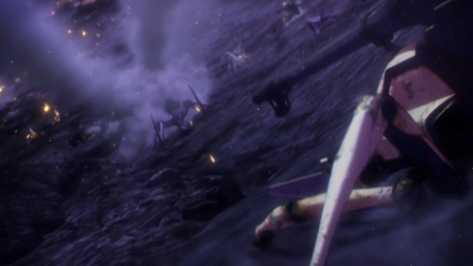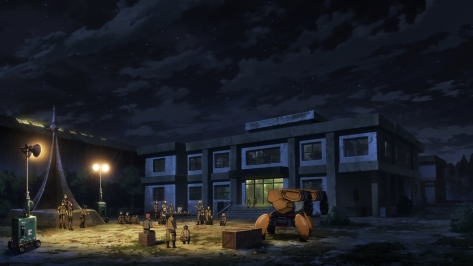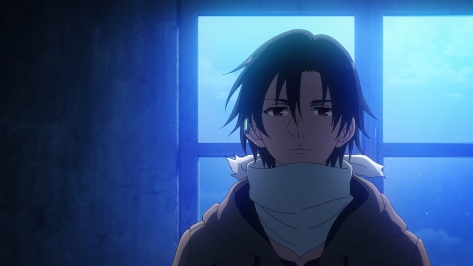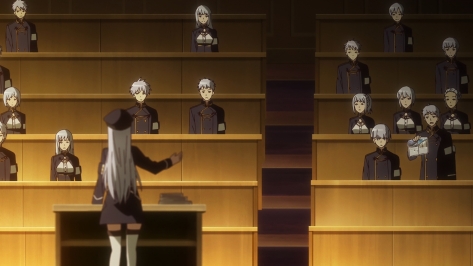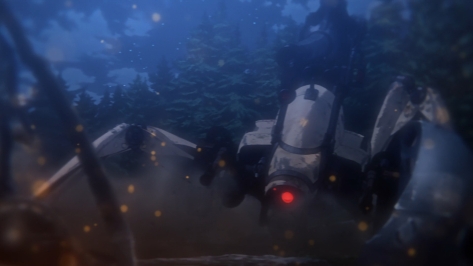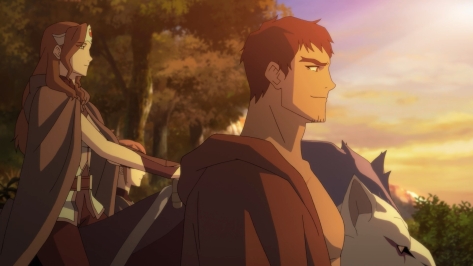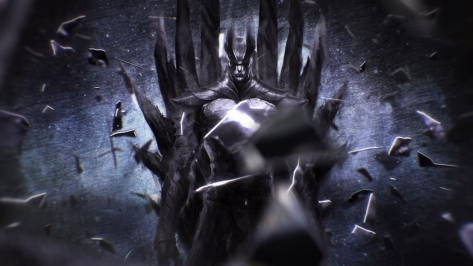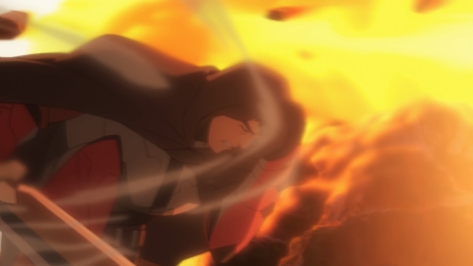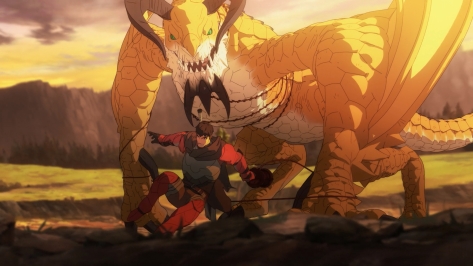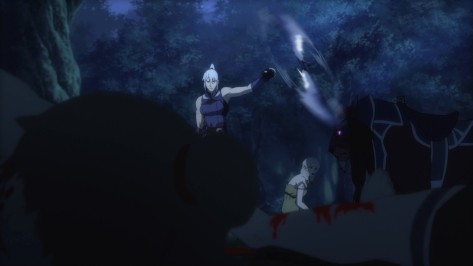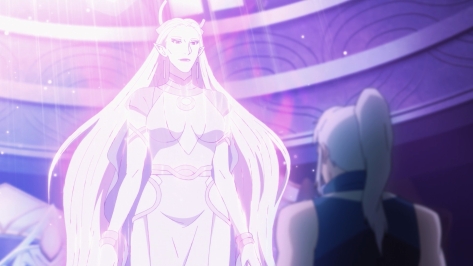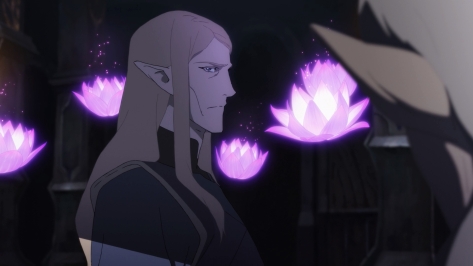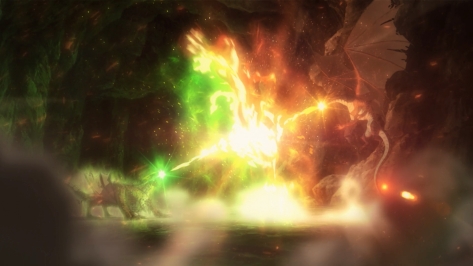Japanese Title: Shuumatsu no Walküre
Related: Record of Ragnarok 2nd Season (TBR)
Similar: Yu Yu Hakusho
Kengan Ashura
Watched in: Japanese & English
Length: 12 episodes
Positives:
- Adam representing humanity in combat is a novel idea
Negatives:
- Slide show animation most of the time
- Atrocious structuring of action and backstory
- Asinine dialogue
- Every fight is an ass-pull due to setup
(Request an anime for review here.)
Record of Ragnarok would be the worst anime I have seen of 2021 if not for Ex-Arm. So bad is this anime that I started it before my previous eight or so reviews and couldn’t finish it until now, when forced to.
The premise of Record of Ragnarok is the decision on the fate of mankind. The gods, which comprise Norse, Hindu, Greek, Christian, and more, have decided that humanity isn’t worth keep around anymore due to all of the conflicts, so they want to wipe everyone out. However, the Valkyrie Brunhilde busts into the assembly and proposes to give the people a fighting chance in a tournament against the gods, a series of 13 one-on-one battles. The gods agree.
The structure for Record of Ragnarok is straight into a tournament arc with backstories slotted in. And here we have a core pillar of what makes this anime so terrible. Each fight follows the same routine. The two contestants step up to much fanfare and commentary (none of it useful), they fight for a minute, pause, go into one fighter’s backstory, unpause, followed by another minute of combat, pause, now time for the other fighter’s backstory, unpause, one more minute of combat. If the fight isn’t over at this point (i.e. we need to drag this out for another episode), go into backstory part two and repeat proceedings. It’s astonishing how little action there is in this action series.
Not that the action is anything to write to your parents about. Pacing issues aside, these fights have no real tension despite the humanity ending stakes because we don’t know these characters, their abilities, nor how they fight beforehand. As such, each new technique feels pulled out of thin air. Need this guy to win? Well, he has this new almighty attack. But wait, the other guy is meant to win? Well, he now has a new attack he should have just started with. Ragnarok could work if it were a proper story with character arcs, build-up, and an actual narrative. With what they have here, it would be better to do a series of two-minute animations show casing “what if” fights – Thor versus Lu Bu, Zeus versus Adam (of the Bible), and so on. Give them flashy animation with references to the lore. Short and sweet.
Animation. That reminds me. Did I mention that the backstory segments are almost entirely slideshows? You might assume this is to save the budget for the divine action. Well, you’d be wrong! The action is barely more than a slideshow outside of a few cuts. The amount of time opponents spend staring at each other is creepy.
Accompanying this flat action is the worst sideline commentary I have heard in a battle anime. It isn’t easy to make expository commentary engaging yet I wager anyone could do better than this. The dialogue in general is bottom of the sceptic tank. Episode one has Brunhilde swear. Her assistant – worst character in this shitshow – comments on the swearing and Brunhilde replies, “I said what I said.” That’s where you should drop Record of Ragnarok.
Now we arrive at the characters. I don’t care about changing these mythological beings. They can be whatever you want. However, if you are going to deviate from the common expectations, then you have more work to do to establish their new personalities, ideologies, and philosophies. As seen in the God of War games, for instance. These in Record of Ragnarok aren’t characters. They’re nothing. They may as well not base them on mythology. Aphrodite is the perfect example. The camera makes a big deal of her from the beginning – of course, you and I know the real reason for this – but she does nothing throughout. The camera keeps cutting to her and on occasion she might make a pointless comment such as, “Oh my,” or, “I like the look of him.” Worthless.
Record of Ragnarok is rubbish. No simpler way of putting it. Sure, the manga might be better, though unless the story, and structure, and characters, and combat flow are different, I can’t see it being anything more than pulp action.
Overall Quality – Very Low
Recommendation: Avoid it. The manga must surely be an improvement if the premise interests you.
(Request reviews here. Find out more about the rating system here.)
Awards: (hover over each award to see descriptions; click award for more recipients)
Positive: None
Negative:

